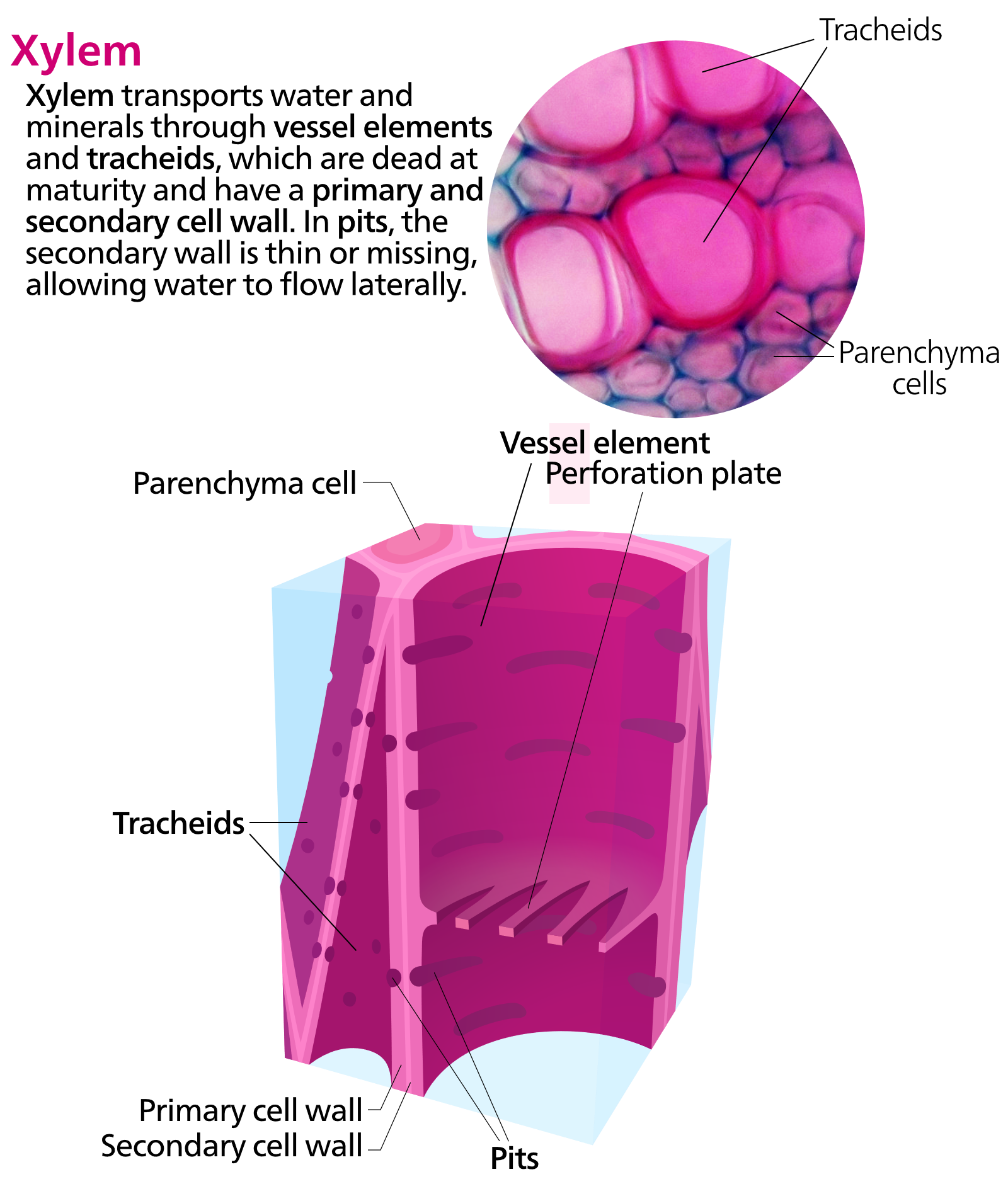
The wall-thickening material in tracheids and vessels are
A. Cutin and suberin
B. Cellulose and cutin
C. Suberin and cellulose
D. Lignin and cellulose
Answer
559.8k+ views
Hint:The cell walls of plant cells such as tracheids and vessels (elements of xylem) necessarily undergo additional secondary thickening or deposition of new hard materials. This hard thickening material is secreted by cytoplasm.
Complete answer: The cells cease to increase in size and become mature. At this stage, the tracheids and vessels undergo modification depending on the specialized function they have to perform. During this entire process of their maturation, the cells undergo additional or secondary thickening deposition of new materials such as cellulose, lignin, suberin, cutin, etc.; vessel elements and tracheids are no exception. The cells of certain parts of the plant including the pericycle, phloem, as well as xylem, undergo heavy thickening of their walls. The thickening materials of the cells are secreted by the protoplasm. These materials, (typically lignin and cellulose) are deposited within the cell walls in such a manner that their cell walls become stratified in appearance. The cells which ultimately develop into vessels, tracheids, and fibers show the thickening of the cell wall in prominent ways. This thickening takes place due to the deposition of a hard substance, called lignin, on the inner surface of the cell wall.

Thus, the correct answer is option D. Lignin and cellulose.
Note:It is noteworthy that usually the thickening material (e.g., lignin) of the secondary wall is not laid down in uniform thickness but it may form special patterns such as annular, spiral, scalariform, reticulate, and pitted.
Complete answer: The cells cease to increase in size and become mature. At this stage, the tracheids and vessels undergo modification depending on the specialized function they have to perform. During this entire process of their maturation, the cells undergo additional or secondary thickening deposition of new materials such as cellulose, lignin, suberin, cutin, etc.; vessel elements and tracheids are no exception. The cells of certain parts of the plant including the pericycle, phloem, as well as xylem, undergo heavy thickening of their walls. The thickening materials of the cells are secreted by the protoplasm. These materials, (typically lignin and cellulose) are deposited within the cell walls in such a manner that their cell walls become stratified in appearance. The cells which ultimately develop into vessels, tracheids, and fibers show the thickening of the cell wall in prominent ways. This thickening takes place due to the deposition of a hard substance, called lignin, on the inner surface of the cell wall.

Thus, the correct answer is option D. Lignin and cellulose.
Note:It is noteworthy that usually the thickening material (e.g., lignin) of the secondary wall is not laid down in uniform thickness but it may form special patterns such as annular, spiral, scalariform, reticulate, and pitted.
Recently Updated Pages
The number of solutions in x in 02pi for which sqrt class 12 maths CBSE

Write any two methods of preparation of phenol Give class 12 chemistry CBSE

Differentiate between action potential and resting class 12 biology CBSE

Two plane mirrors arranged at right angles to each class 12 physics CBSE

Which of the following molecules is are chiral A I class 12 chemistry CBSE

Name different types of neurons and give one function class 12 biology CBSE

Trending doubts
One Metric ton is equal to kg A 10000 B 1000 C 100 class 11 physics CBSE

Explain zero factorial class 11 maths CBSE

What is 1s 2s 2p 3s 3p class 11 chemistry CBSE

Discuss the various forms of bacteria class 11 biology CBSE

State the laws of reflection of light

Difference Between Prokaryotic Cells and Eukaryotic Cells




